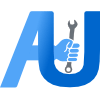Back to Course
How Cars Work
0% Complete
0/0 Steps
-
Introduction - How Cars Work
-
Objectives - How Cars Work
-
Automotive Timeline3 Topics
-
How Cars Work6 Topics
-
Fuels and Designs3 Topics
-
Engine Identification2 Topics
-
Vehicle Identification6 Topics
-
Parts and Systems2 Topics
-
Careers3 Topics
-
Summary - How Cars Work
-
Activities - How Cars Work2 Topics
-
Review - How Cars Work
-
Test - How Cars Work1 Test
Lesson 4,
Topic 6
In Progress
Power Transfer
Lesson Progress
0% Complete
Several processes have to happen in order for a vehicle to move. The following explains how power is transferred in a common gasoline powered (non-hybrid) automobile.
Fuel is stored as chemical energy in the gas tank.
Step 1
Step 2
Fuel is transported to the engine by a fuel pump.
Air-fuel mixture enters the engine.
Step 3
Step 4
Electrical energy is used to create a spark at the spark plug.
Combustion occurs, converting the chemical energy to kinetic energy. The piston moves linearly, reciprocating up and down or back and forth.
Step 5
Step 6
The reciprocating motion of the pistons is converted to rotary (circular) motion of the crankshaft.
The crankshaft’s rotary motion turns the transmission.
Step 7
Step 8
On front-wheel drive (FWD) vehicles, rotary motion is transferred through a transaxle (transmission and differential combined). From the transaxle, rotary power is moved through constant velocity (CV) shafts. On rear-wheel drive (RWD) vehicles, rotary motion is transferred from the transmission through the drive shaft then to a differential and final drive assembly. In this situation, the differential changes the power fl ow 90° and allows the drive wheels to turn at different speeds when cornering. Power is transferred from the differential to axle shafts.
The axle shafts or constant velocity (CV) shafts turn the wheels.
Step 9
Step 10

